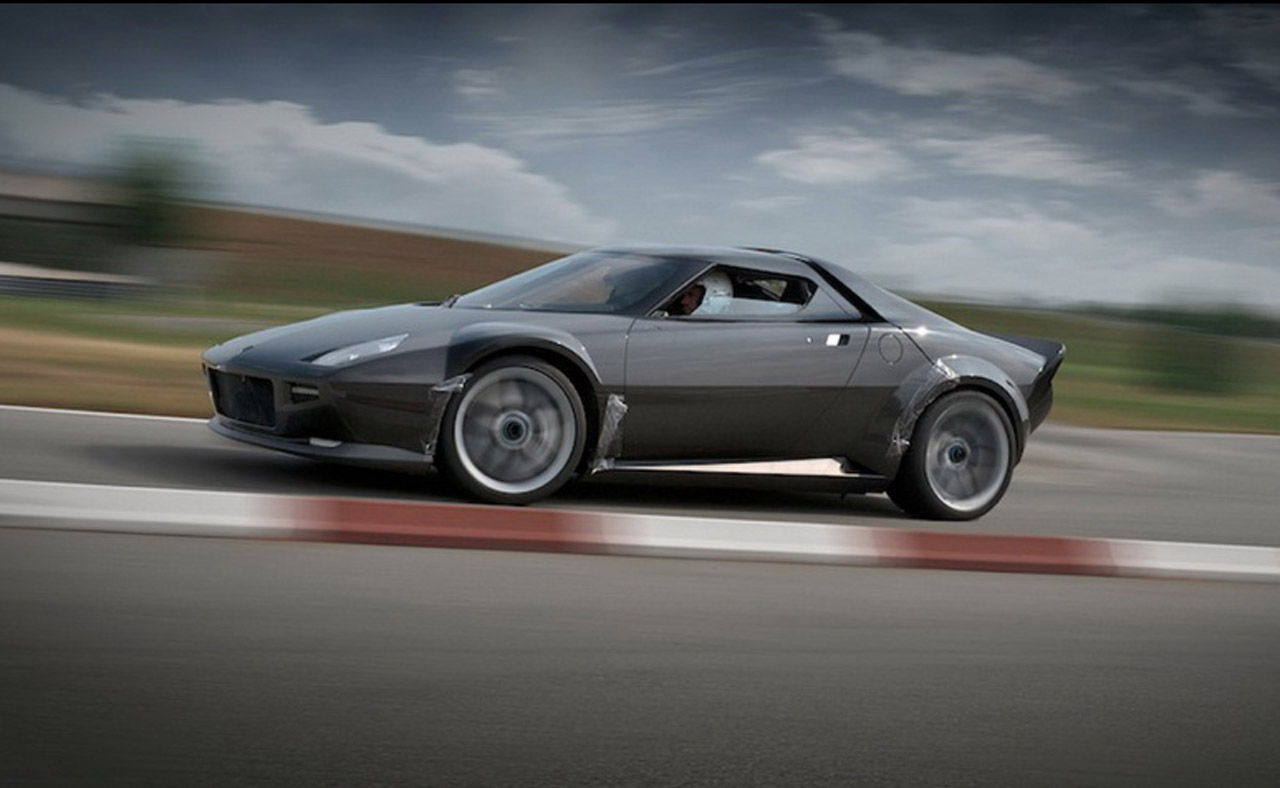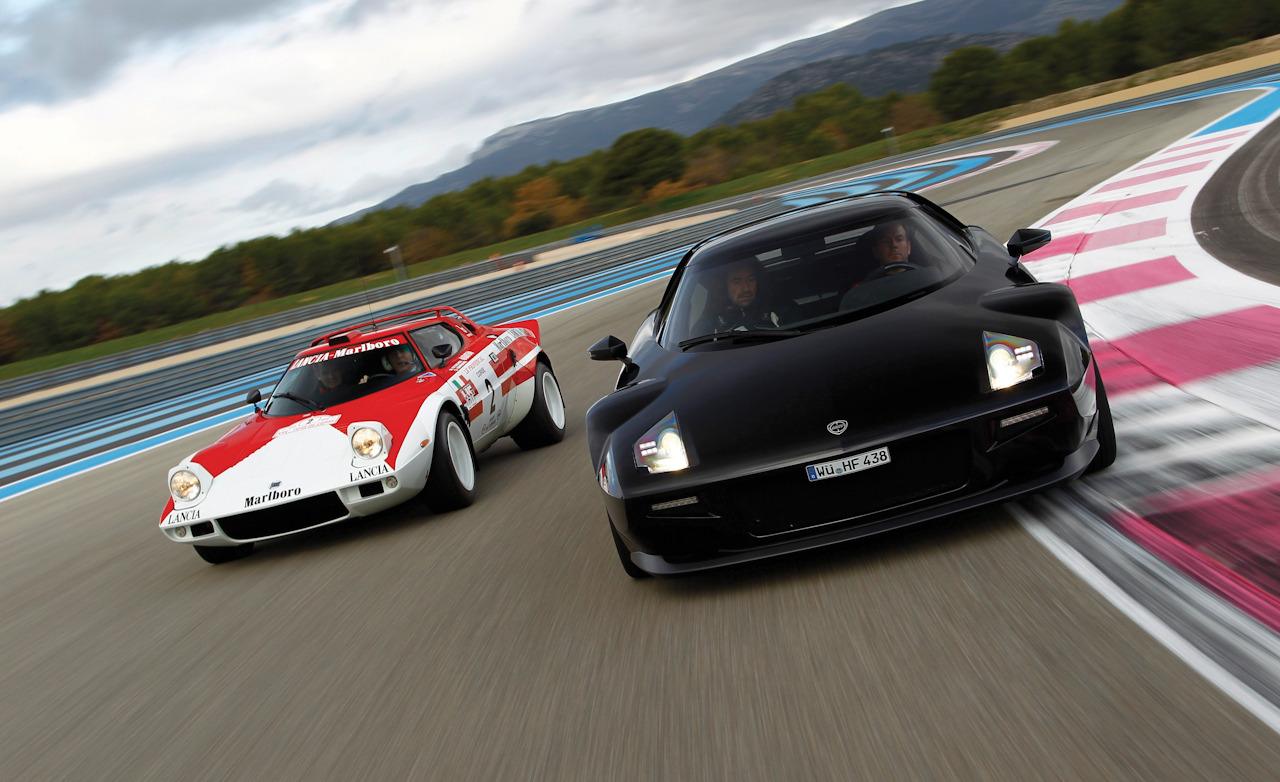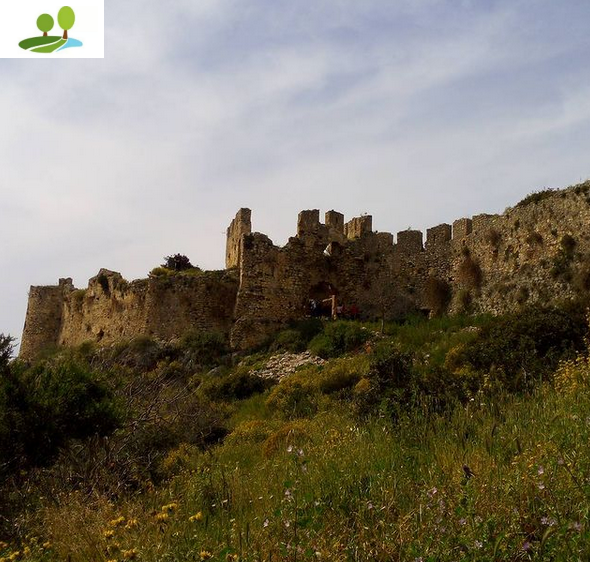

The Lancia Stratos HF (Tipo 829), widely and more simply known as Lancia Stratos, is a
sports car and rally car made by Italian car manufacturer Lancia. The HF stands for High Fidelity. It was a very successful rally car, winning the World Rally Championship in 1974, 1975 and 1976.
A Bertone-designed concept car called the Lancia Stratos Zero was shown to the public in 1970, but shares little but the name and mid-engined layout with the Stratos HF version. A new car called the New Stratos was announced in 2010 which was heavily influenced by the design of the original Stratos, but was based on a Ferrari chassis and engine.





Bertone had previously done no business with Lancia, who were traditionally linked with Pininfarina, and he wanted to come into conversation with them. Bertone knew that Lancia was looking for a replacement for the ageing Fulvia for use in rally sports and so he designed an eyecatcher to show to Lancia. Bertone used the running gear of the Fulvia Coupé of one of his personal friends and built a running showpiece around it. When Bertone himself appeared at the Lancia factory gates with the Stratos Zero he passed underneath the barrier and got great applause from the Lancia workers.
After that a cooperation between Lancia and Bertone was decided to develop a new rally car based on ideas of Bertone’s designer Marcello Gandini who already had designed the Lamborghini Miura and Countach.
 Lancia presented the Bertone-designed Lancia Stratos HF prototype at the
1971 Turin Motor Show, a year after the announcement of the Stratos
Zero concept car. The prototype Stratos HF (Chassis 1240) was
fluorescent red in colour and featured a distinctive
crescent-shaped-wrap-around windshield providing maximum forward
visibility with almost no rear visibility. The prototype had three
different engines in its early development life: the Lancia Fulvia
engine, the Lancia Beta engine and finally for the 1971 public
announcement, the mid-mounted Dino Ferrari V6 producing 192 PS (141 kW).
The use of the Dino V6 was planned right from the beginning of the
project, but Enzo Ferrari was reluctant to sign off the use of this
engine in a car he saw as a competitor to his own Dino V6.
Lancia presented the Bertone-designed Lancia Stratos HF prototype at the
1971 Turin Motor Show, a year after the announcement of the Stratos
Zero concept car. The prototype Stratos HF (Chassis 1240) was
fluorescent red in colour and featured a distinctive
crescent-shaped-wrap-around windshield providing maximum forward
visibility with almost no rear visibility. The prototype had three
different engines in its early development life: the Lancia Fulvia
engine, the Lancia Beta engine and finally for the 1971 public
announcement, the mid-mounted Dino Ferrari V6 producing 192 PS (141 kW).
The use of the Dino V6 was planned right from the beginning of the
project, but Enzo Ferrari was reluctant to sign off the use of this
engine in a car he saw as a competitor to his own Dino V6. After long
and very Italian political antics and after the production of the Dino
car had ended the Commendatore agreed on delivering the engines for the
Stratos and all of a sudden 500 engines were dumped on Lancia’s door.
After long
and very Italian political antics and after the production of the Dino
car had ended the Commendatore agreed on delivering the engines for the
Stratos and all of a sudden 500 engines were dumped on Lancia’s door.The Stratos was a very successful rally car during the 1970s and early 1980s. It started a new era in rallying as it was the first car designed from scratch for this kind of competition.[4] The three leading men behind the entire rallying project were Lancia team manager Cesare Fiorio, British racer/engineer Mike Parkes and factory rally driver Sandro Munari with Bertone's Designer Marcello Gandini taking a very personal interest in designing and productionising the bodywork.

Lancia did extensive testing with the Stratos and raced the car in several racing events where Group 5 prototypes were allowed during the 1972 and 1973 seasons. Production of the 500 cars required for homologation in Group 4 commenced in 1973 and the Stratos was homologated for the 1974 World Rally Championship season.[5] The Ferrari Dino V6 engine was phased out in 1974, but 500 engines among the last built were delivered to Lancia.[6] Production ended in 1975 when it was thought that only 492 were made (for 1976 season, the Group 4 production requirement was reduced to 400 in 24 months[7]). Manufacturer of the car was Bertone in Turin, with final assembly by Lancia at the Chivasso plant.[8] Powered by the Dino 2.4 L V6 engine that was also fitted to the rallying versions, but in a lower state of tune, it resulted in a power output of 190 PS (140 kW), giving the road car a 0-60 mph time of just under five seconds, and a top speed of 144 mph (232 km/h). The car was sold as the Lancia Stratos Stradale.
For racing, the engine was tuned up to 275 PS (202 kW) for the 12v version, 320 PS (235 kW) for the later 24v version and even to 560 PS (412 kW) with a single KKK turbocharger.[9] However, turbocharged versions were only allowed to compete in Group 5 and were never as reliable as their naturally aspirated counterparts.
The car won the 1974, 1975 and 1976 championship titles in the hands of Sandro Munari and Björn Waldegård, and might have gone on to win more had not internal politics within the Fiat group placed rallying responsibility on the Fiat 131 Abarths.
1983 Andy Bentza and his RX Lancia Stratos HF, the only 3.0 L Stratos
Source:en.wikipedia.org


Δεν υπάρχουν σχόλια :
Δημοσίευση σχολίου